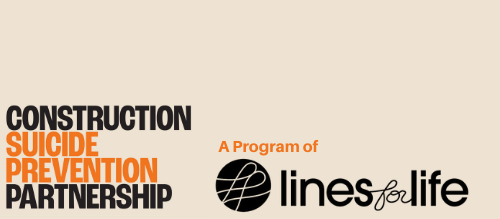Sara is a current social work intern at Lines for Life. Prior to entering the social work field, she worked for a general contractor for 5 years as a project engineer and then superintendent. While working as a superintendent, Sara took a particular interest in accessibility and inclusion in the built environment. This led her to pursue a Master of Social Work. She will graduate in May 2025.
In her first internship, she focused on emergency preparedness for women and caregivers. She hopes to blend her passions for building, climate resiliency, and social justice to advocate for affordable and accessible housing, transit, and community spaces.
Women in Construction (WIC) week (March 2nd-8th, 2025)
This week, we celebrate and promote women in the construction industry each year. Women currently make up about 10-15 percent of the construction industry and only about 4 percent of hands-on trade jobs. There are many barriers that women face to entering and staying in the construction industry, such as discrimination, harassment, and often difficult or uncomfortable working conditions. Long commutes and working hours can make it difficult for women who are primary caregivers for their children. Despite being underrepresented, there are many good reasons for women to work in the trades, including low barriers to entry, on-the-job paid training, higher earning potential, and an increased demand for skilled construction workers throughout the country.
Over the past year, significant progress has been made to support women working in the construction industry. Let’s look at some of them.
Many construction workers do not get sick time, let alone parental leave. Being a laborer is a demanding job, so this is a huge win for pregnant women laborers or those thinking about becoming pregnant to get paid time off to recover from childbirth and bond with their infants. Currently, 13 states and Washington D.C. offer some paid family leave, but in most states, this will support women who no longer have to choose between their family and career.
Vancouver, B.C., implements flush toilets with more than 25 workers on job sites.
Nobody likes port-a-potties. Especially when they fill up long before the scheduled service day. Many complain about it without realizing that inadequate toilet facilities can compromise women’s health and safety. Toilets are often located on the peripheries of the site and the ground level. On large sites or high-rise buildings, it could be a 10-minute walk or several flights of ladders down to get to a toilet. Holding it because of how inconvenient it is to get to the toilet can put women at risk of UTIs or pelvic floor issues, and failing to address menstruation can lead to embarrassment, infection, or even death in rare cases.
New York City assists with childcare for women getting into the construction trades. Nontraditional Employment for Women (NEW), a pre-apprenticeship program for women in New York City focusing on construction and building, transportation, and utility trades, received a grant from the state of New York to lift barriers for women seeking a job to provide economic stability and upward mobility. There is a shortage of skilled labor to solve the current housing affordability crisis. While many states have subsidies for lower-income parents to access affordable childcare, apprentices often are still unable to afford basic needs; even journey workers cannot afford the high cost of daycare and are not eligible for income-based subsidies.
OSHA requires proper fitting PPE for ALL workers.
“Shrink it and pink it” is a common philosophy of adapting men’s gear for women, but assuming that smaller and pinker PPE is safe for women is dangerous. PPE that does not account for different chest or hip shapes, torso length, or smaller hand size leads to reduced protection from falls, clothing snagging, or fatigue injuries from reduced grip strength or fallen foot arches.
When PPE doesn’t fit quite right, women or nonbinary people might not wear it because of discomfort or reduced productivity. While this bill will greatly benefit women and nonbinary people, it will also benefit men who fall outside the most commonly stocked PPE sizes.
The Construction Suicide Prevention Partnership launched the Construction Careline.
Lastly, I want to plug the Construction Careline. As an intern with Lines For Life, I am very excited about the Construction Careline. This line is available 24/7/365 and dedicated to helping people in the construction industry get emotional support and connect to resources that support mental, emotional, and physical well-being. Working in construction comes with unique challenges and barriers to well-being that many outside the field do not understand. The Construction Careline is available to all construction workers across the country.
Happy WIC week to all of the hardworking women out there. Here’s to the current achievements and future opportunities for women in construction.



